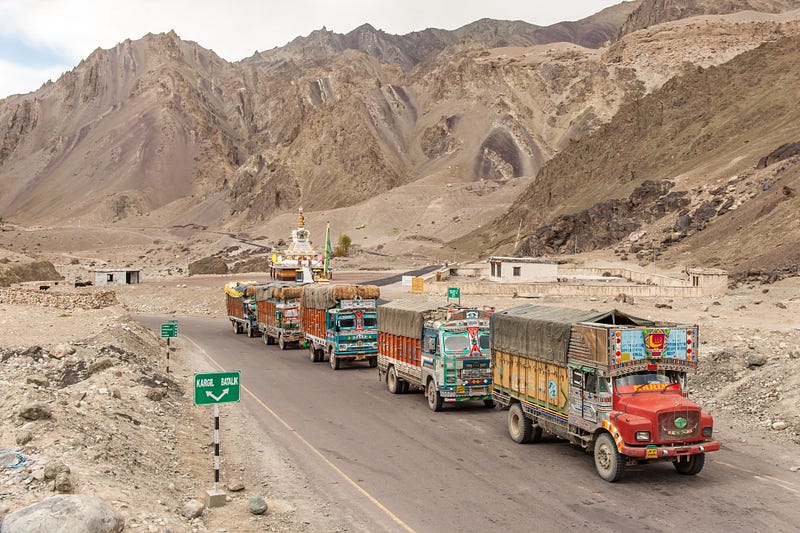Dispatch Management
Gist of GST: Is India Inc. Ready?
Mar 30, 2017
5 mins read

Finally, India seems to be taking strides forward in order to roll-out the hugely anticipated goods and services tax, or GST, by the self-set deadline of 1st July, 2017. Experts have not shied away from terming the new sales tax regime as the most significant economic reform since the economic liberalisation led by Mr. Singh (honorable ex. Finance Minister and Prime Minister) in the 1990s. As we advance towards the next steps and implementation, it is imperative to understand the impact it carries, and exactly why is it a game-changer for the logistics-heavy sectors of the Indian economy.
Lets start from the basics:
What is GST, and is it really that big a deal?
Bigger than you think! GST is essentially a single tax on the supply of goods and services, all the way from manufacturers to consumers. It aims to bring uniform indirect tax regime throughout the country by subsuming central and state indirect taxes into single indirect tax. It is a consumption tax, and will be applicable at the stage where a product is consumed rather than at various stages of production.
GST has 2 components called Central GST and State GST. Centre will levy another tax called Integrated GST (IGST) for goods and services that pass through several states or imports. All the intermediate states will get share through this IGST.
What GST further aims to accomplish is enhancing ease of doing business by removing indirect tax barriers across states and integrate the country into a common market, boosting government revenue and reducing business costs.
A Unified Market called ‘India’:
Tax-barriers across states have fragmented the Indian market. Tackling the problem, GST would provide one common unified window for tax collection. GST empowers final consumer to bear only GST (unlike multiple taxes before, like central VAT or excise duty, octroi or entry tax, services tax, central sales tax on inter-state sales, etc) in the supply chain charged by the last dealer with set-off benefits at all the previous stages. This means GST will reduce Cascading tax i.e taxes on tax. This will lead to the creation of a unified market, which would facilitate seamless movement of goods across states and reduce the transaction cost of businesses. Why is that important, you might ask? Your question is the very reason for the existence of this article, my friend.
Let’s say, you’re an FMCG company, and a truck is moving stuff from your manufacturing plant in Amritsar, Punjab to your C&FA in Kochi, Kerala. It will pass through about 7 states. During the journey, several taxes have to be paid — octroi, VAT, excise duties and so on. Ignoring for a moment that each source of tax collection is a source of confusion, corruption and delay, still by the time the truck arrives at a destination in a couple of weeks, a huge amount of cost is indirectly added to the consumer.
Rather than being a cocktail of dozens of economies making growth slow and inconsistent, GST is aiming to turn India into one unified common market, leading to economies of scale in production and efficiency in supply chain, greater ease of doing business, all of this resulting in big reductions in logistics costs from companies across all sectors. Logistics Sector! The word we had been waiting for.
Let’s explore the impact on the logistics and transportation sector in a bit more detail:
Impact of GST on Logistics Sector

As pointed out, the GST law will address the issues related to inter-state movement of goods, and lead to a reduction in logistics cost accrued due to inter-state levies. This will directly help industry sectors with long value chains from basic goods to final consumption stage with operations spread in multiple states. We are looking at sectors like FMCG, Pharma, Consumer Durables, and even the ‘new-age’ e-commerce.
Also, substantial savings in logistics and distribution costs will be achieved due to the consolidation of warehouse or sales and distribution depots. Over time, sectors like FMCG and e-commerce have suffered by having to maintain multiple warehouses across states to avoid CST levy and state entry taxes. This has resulted in most of the warehouses operating below their capacity (as they are not mapped to demand) and thus adding to their operational inefficiencies. Post-GST, goods would move freely inter-state without any levy, and thus it’s wise to expect warehouse consolidation across the country at strategic locations (based on demand serviceability), leading to huge centralized logistic hubs.
The transportation costs itself will be optimized by the reduction in transit times, which will increase fleet productivity and lead to timely delivery of goods.
Check Out: The Definitive Guide on Transport Management System
We, at Locus, are firmly poised to help you master this significant change that would impact your operations. Our state of the art decision making platform for logistics will help ensure that you gain on Efficiency, Transparency & Consistency while automating your logistics. Our Simulation & Analytics engine will help you stay ahead of the game by helping you make intelligent decisions on strategic Warehouse locations, and simulation of new business models etc. This, bundled with our core offering of intelligent route optimization along with Cartonization (3D Packing) to enhance vehicle utilization, will help unlock significant value and give you an edge over competition.

Related Tags:

Dispatch Management
Loading a shipping container — Part II
(Volumetric Packing Benchmarks) I hope you all enjoyed the first read in the series of write-ups on the Lattice 3D packing. Locus has since, been busy improving the core 3D packing algorithm, adding more features and tuning its hyper parameters. We will visit all of these in a dedicated, follow-up article. Until then let’s get into some specifics and numbers. […]
Read more
Dispatch Management
Smart Package Sorting – Add Intelligence to Your Warehouse
Smart, well informed and less tolerant is what defines new age digital consumers. E-commerce business has advanced towards being more consumer-centric. Today, consumers are accustomed to ‘Click & Buy’ model with an expectation of shorter delivery time along with the flexibility in delivery anywhere & anytime. Alain Ferard from Neopost put it aptly — “Customers expect convenience”.These […]
Read moreMOST POPULAR
EDITOR’S PICKS
SUBSCRIBE TO OUR NEWSLETTER
Stay up to date with the latest marketing, sales, and service tips and news


Gist of GST: Is India Inc. Ready?